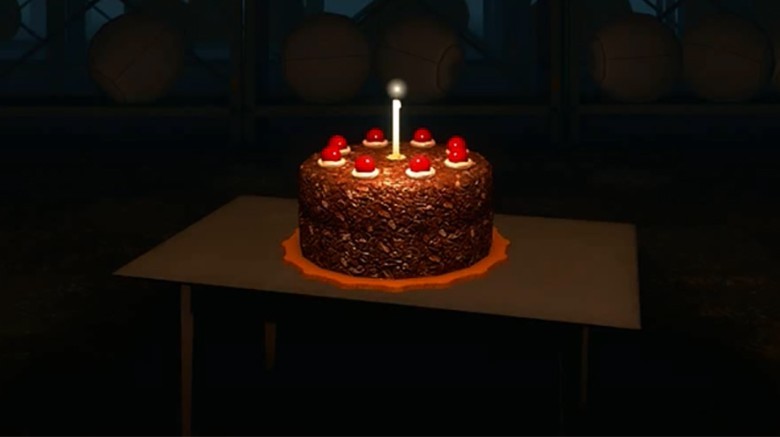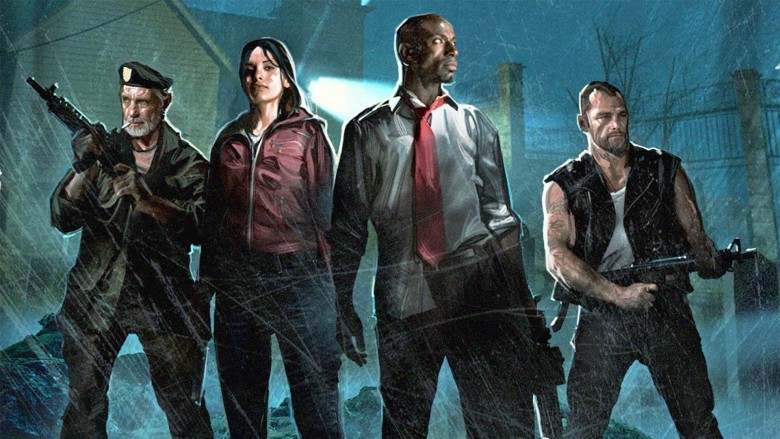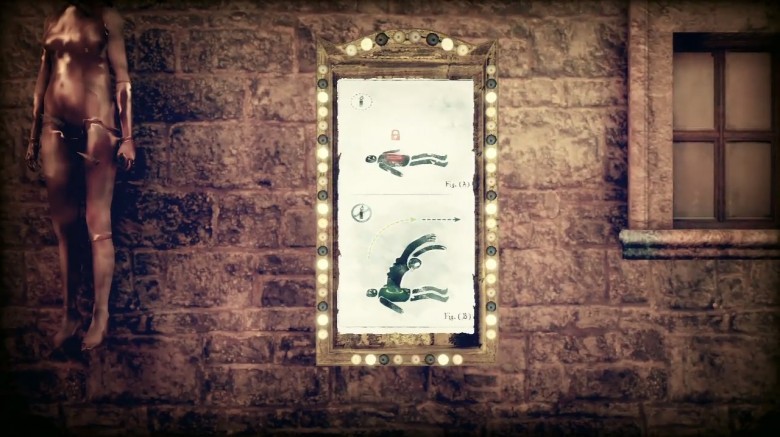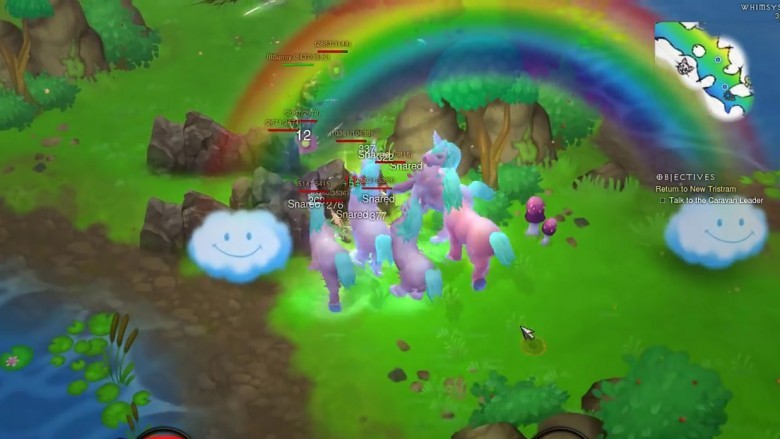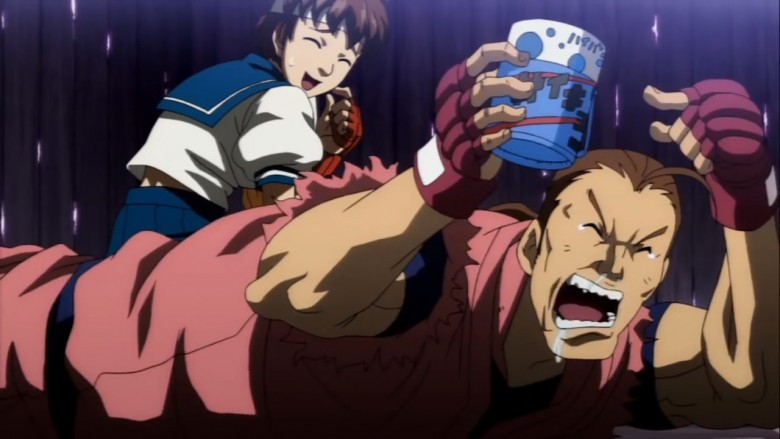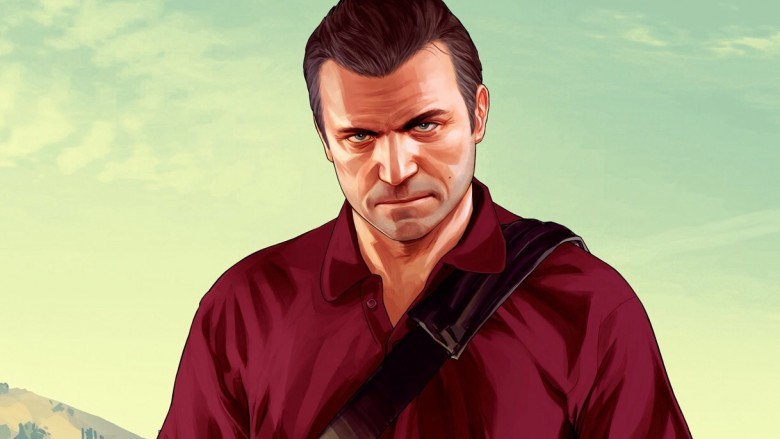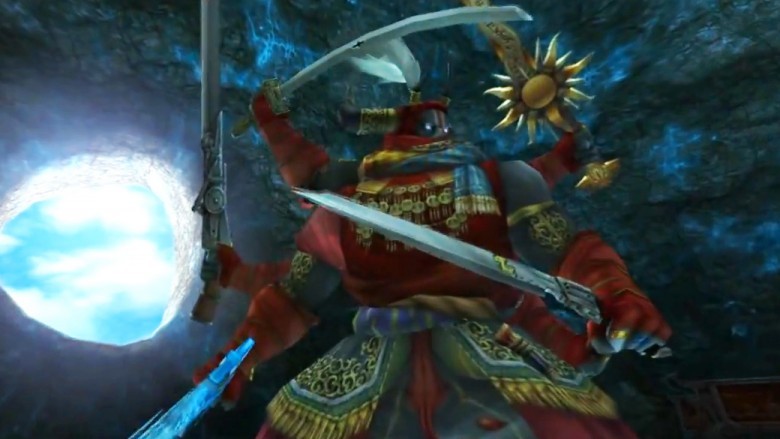Inside Jokes Only Real Gamers Will Understand
By and large, video games take themselves pretty seriously. Occasionally a Jazzpunk or an Octodad or a Sam & Max slips through the cracks, but the few funny games on the market are rare exceptions; after all, there's not much time for comedy when you're busy shooting things.
But that doesn't mean that games don't have jokes—you just may not get them. There's little fans love more than finding an unexpected Easter egg that reminds them of one of their favorite games, and as a bonus, some of these hidden references are actually pretty funny. After all, a video game isn't just a conversation between the developers and the player, it's also a dialogue between developers themselves, and many games are full of subtle tributes (or good-natured parodies) of other titles. You just have to look closely—and, in most cases, pray you understand the reference.
Left 4 Dead's 'Zombie Genocidest' achievement
Other than zombies and mid-2000s release dates, Dead Rising and Left 4 Dead don't have much in common. Dead Rising is a playful sandbox game that thrives on experimentation, chaos, and lots and lots of blood. Left 4 Dead is a tense and challenging multiplayer shooter that requires strategy, precision, and careful communication between teammates.
However, the lack of similarities didn't stop Valve, the company behind Left 4 Dead, from taking a shot at its competition. In Dead Rising, there's an achievement called "Zombie Genocider" that's earned by killing 53,594 zombies (53,594 also happens to be the population of Williamette, Colorado, where Dead Rising takes place). In Left 4 Dead, which came out two years after Dead Rising, players can earn the "Zombie Genocidiest" achievement by killing 53,595 zombies, or one more than Dead Rising.
That's pretty cheeky, but it didn't end there. Dead Rising 2 came with an achievement called "Z-Genocider 2: Genocide Harder," which asked players to kill 53,596 zombies. Sadly, that was the end of the back-and-forth—Left 4 Dead 2 came out before Dead Rising 2 and hasn't seen a sequel since, so there's been no way for Valve to answer. That didn't stop Dead Rising 3 from including a "Master of Massacre" achievement, however, which requires players to kill—you guessed it—53,597 zombies.
Other developers have tried to get in on the fun too, with varying degrees of success. Before Dead Rising 2 came out, the open-world action game Prototype included an achievement called "Trail of Corpses" that required players to execute 53,596 kills, but given that Prototype's Infected aren't really zombies and Radical Entertainment got the naming convention all wrong, we're going to go ahead and say it doesn't really count.
The Portal-style safety posters in Shadow of the Damned
Between GLaDOS' passive-aggressive instructions, the silent-yet-endearing Weighted Companion Cube, the catchy credits theme, and, yes, the promise of cake, Portal is practically a two-hour comedy routine all on its own.
And yet, one of the funniest Portal gags in gaming doesn't have anything to do with so-called triumphs or dishonest baked goods. Instead, Grasshopper Manufacture's Shadows of the Damned gets a big laugh by parodying one of Portal's most-overlooked features: the simple, Ikea-like instructions that line the walls at Aperture Labs.
In Portal, the signs scattered around the levels offer players hints, or wordlessly teach them how to use the game's iconic Portal Gun. In Shadows of the Damned, the helpful sign becomes something a little more sinister. Instead of using portals to solve physics puzzles, the demons in Shadows of the Damned use them to rip holes in their prey and enter other dimensions. "You leave town for a few demon centuries," one of the characters quips, "and suddenly there's all this amazing new technology when you get back!" So true—and with those helpful signs, all the demons will know exactly how to use it, too.
Diablo 3's Whimyshire
When Blizzard announced Diablo 3, fans were furious. It wasn't because they were getting a new entry in one of gaming's most storied and beloved franchises, of course—that's something people had wanted ever since Diablo 2 made its big debut in 2000—but because the game was too colorful. Compared to the first two Diablo games, which feature dark, moody, and fairly realistic graphics, Diablo 3's first screenshots looked bright and cartoony, and fans weren't having it—some even started a petition to try and make Blizzard change the game's art style.
If only they'd known. Not only did Blizzard refuse to make any substantial changes to Diablo 3's aesthetics, but in response to the "controversy," the developers created a secret area called Whimsyshire, a neon-colored wonderland populated by unicorns, teddy bears, and smiling sunflowers. In Whimsyshire, health orbs look like cupcakes. Treasure chests look like presents. The map looks like it's been drawn by a toddler. It is, in short, disgustingly cute and absolutely hilarious.
To add insult to injury, Blizzard made it very difficult to find Whimsyshire, directly trolling diehard fans and completists—the same people who were giving Blizzard a hard time in the first place. Those players probably don't appreciate Whimsyshire's genius, which is basically a digital middle finger to fans who take things too seriously, but for the rest of us (and Diablo III's development team), it's one of the finest easter eggs of all time.
Dan Hibiki
Forget about Tekken and your Soulcalibur and Skullgirls. When it comes to fighting games, if it's not Street Fighter and Mortal Kombat, the general public probably doesn't know much about it.
That's too bad, too, because it means casual fans are missing out on one of the greatest practical jokes in video game history. Dan Hibiki first debuted as a secret character in Street Fighter Alpha, and if he looks a little familiar, you must be a fighting game fan. While the resemblance isn't perfect, Dan is basically just a knockoff of Art of Fighting's main character, Ryo Sakazaki. As it turns out, Capcom considered Ryo a ripoff of Street Fighter's Ken and Ryu, and retaliated by turning Ryo into the lamest character imaginable. Like Ryo, Dan wears a brightly colored martial arts gi, and many of Dan's moves are parodies of Ryo's, right down to the controller movements needed to pull them off. While most Street Fighter characters can only taunt their opponents once per match, Dan can taunt them endlessly, as in Art of Fighting.
Also? Dan totally sucks. In the world of Street Fighter, Dan talks a big game, but he's really just an arrogant windbag, and it doesn't take much effort to put him down (or make him run for a fight). Compared to the rest of Street Fighter's roster, Dan is considerably slow and weak and has a limited range, putting him at a competitive disadvantage. Like Ryu, Dan can throw fireballs, Unlike Ryu, Dan's projectiles are small and don't do much damage.
And yet, thanks to his quirks, Hibiki has grown into something of a fan favorite. Players who get Capcom's joke tend to think it's a good one, while beating an opponent with Dan is considered fighting games' ultimate humiliation. The best part of the joke, however? While Dan's become a fixture of the extra-popular Street Fighter scene and is popular among both hardcore and casual players, Ryo still fights in relative obscurity, known to only the most dedicated fighting game fans.
Daddy's back!
Every now and then, when Grand Theft Auto V's gangster-turned-civilian-turned-gangster-again Michael De Santa enters his cushy Vinewood abode, he yells out "Daddy's back, bitches!" It's a okay line, and one that works perfectly well with Michael's character (let's face it: the De Santo patriarch isn't going to win the Father of the Year award any time soon). However, it's also designed to drive a select group of players absolutely crazy.
See, "Daddy's back, you bitches!" is also the first line in the first mission in Grand Theft Auto IV, a level that GTA IV's most dedicated fans probably never want to play again. While mods have kept Grand Theft Auto IV relevant for years, many of them—especially the ones that unlock various fan-made multiplayer modes—won't work with save game files, meaning that people who play Grand Theft Auto IV with mods enabled have to start from the beginning every time they play. Accordingly, some players have heard that one line of dialogue over and over again, and repeating it in Grand Theft Auto V isn't just Rockstar subtly acknowledging its own past, it's an out-and-out attempt to troll hardcore fans—and it worked.
The Dopefish
Before id Software invented and perfected the modern first-person shooter with Wolfenstein 3D, DOOM, and Quake, the company made Commander Keen, a platforming game inspired by Super Mario Bros. 3. However, while Commander Keen's side-scrolling levels represented a major technical breakthrough for PC developers, Keen's most enduring contribution to gaming culture isn't the Commander himself. Instead, it's one of Keen's villains, the idiotic Dopefish, who would carry on Commander Keen's legacy.
Commander Keen describes the Dopefish like this: "the second-dumbest creature in the universe, this creature's thought patterns go 'swim swim hungry, swim swim hungry.'" Aside from his bulging eyes and buck-toothed grin, there's nothing particularly special about the Dopefish, and that's what makes him the perfect Easter egg. From his humble beginnings as a sketch on a piece of binder paper, the Dopefish quickly grew into one of the most ubiquitous characters in PC gaming. After Commander Keen, the Dopefish appeared in Wacky Wheels as a secret character, made a cameo in the full version of Quake, died alongside Commander Keen in Quake II, and came back as a deformed monster in Quake III.
It wasn't just id games that featured the Dopefish, either. A planned guest appearance in Duke Nukem 3D was scrapped when the level featuring the Dopefish was cut. In Descent III, naming your pilot Dopefish changes your profile picture to a photograph of a fan in a Dopefish Halloween costume. In Max Payne, a gun-wielding Dopefish appears as a piece of graffiti. In Hitman 2, a Dopefish bobblehead appears in one of your targets' bedrooms.
In fact, the Dopefish has appeared in so many games that he's been called the greatest in-joke in video game history—and while he's slowed down in recent years, he'll never be stopped entirely. As recently as 2012, Dopefish creator Tom Hall included his most famous creation in the Google+ title Pettington Park. Don't worry—it's only a matter of time before the Dopefish strikes again.
Gilgamesh
From Chocobos to Cactrots to high-powered summons like Ifrit and Bahamut, the Final Fantasy series has many recurring creatures, but there's only one who has an in-story reason for popping up again and again. While most Final Fantasy games don't connect to each other directly, in Final Fantasy V, Gilgamesh is trapped in a void outside of space and time, leaving him free to show up in almost every Final Fantasy game that follows.
That's good, too, because despite his prowess on the battlefield, Gilgamesh is best for giving the Final Fantasy games some much-needed comedic relief. In Final Fantasy V, Gilgamesh talks a big game but can't do much right: he grabs the wrong sword from a treasure chest (the Excalipoor, not to be confused with Excalibur) and makes excuses to run away during fights. In Final Fantasy XIV, Gilgamesh tries—and mostly fails—to steal rare weapons.
But Gilgamesh's best (and funniest) appearance comes in Final Fantasy XII, where he wields knockoffs of classic Final Fantasy weapons. While it looks like Gilgamesh has Cloud Strife's Buster Sword from Final Fantasy VII, the kanji on the hilt clearly identifies the blade as a bootleg. Similarly, his edition of Squall Leonhart's gunblade has a cuddly Chocobo crest, not a regal lion's head. Gilgamesh's version of Tidus' Orichalcon has one too many hooks, and his fake Tournesol—the strongest sword in Final Fantasy XII—is thicker and squatter than the real thing.
As in previous iterations, Final Fantasy XII's Gilgamesh never learns his lesson, either. While Gilgamesh is obsessed with finding a legendary sword, the players learn that the blade isn't really anything special—although that discovery doesn't stop Gilgamesh from stealing it anyway. Later, Gilgamesh hands over one of the best fishing poles in the game to the player, dismissing it simply as a "a useless stick." Basically? If it's not a big honkin' sword, Gilgamesh has no use for it.
Saints Row 4's voice options
One of the best things about the Saints Row games is the series' detailed and flexible character creation tool, which allows you to make some truly bizarre protagonists. Want to create a schoolgirl who wears a werewolf mask? You can. Want to make your character a zombie, or an alien, or a celebrity like Michael Jackson, or the President of the United States, Mr. Donald Trump? Go right ahead.
That level of customization extends to the voice options, too, and you can give your Saints Row 4 protagonist one of seven voices, which range from American male to French female to... well, Nolan North.
That's right: Saints Row 4 honors one of the hardest working voice actors in the video game industry by giving him his own vocal track, one that supersedes other qualifiers like gender or race. That's more than a nice tribute, however. Play more than a few AAA video games, and you'll notice that Nolan North is absolutely everywhere. He's Nathan Drake in the Uncharted series. He's Desmond Miles, the modern-day protagonist in the first six Assassin's Creed games. He's the Penguin in the Arkham games, David in The Last of Us, and replaced Peter Dinklage as the Ghost in Destiny.
In other words, aside from maybe Troy Baker (who co-starred with North in Uncharted 4: A Thief's End), North is pretty much the voice of modern video gaming. Giving North special treatment in Saints Row 4's character creator is a pretty good way to call out North's overexposure without disrupting the flow of the game, and we're pretty sure North doesn't mind the joke at his expense—after all, no matter what he thinks, he still got paid.
The Cucco Revenge Squad
It's okay to be honest. We've all done it. You're wandering across Hyrule and you run across a cucco, one of The Legend of Zelda's chicken-like beasts. There's no one around, so you smack it with your Master Sword. It makes a funny noise, so you hit it again. And again. And again.
And then, suddenly, the sky goes dark. Hundreds of chickens fill the screen, each one honing in on Link. You swing your sword, but it's too late. Link dies, pecked to death by the Cucco Revenge Squad.
The Cucco Revenge Squad started as a joke in The Legend of Zelda: A Link to the Past, the cucco's debut game, but it's gone on to be one of the most reliable features in the Zelda franchise. The Squad survived the transition from 2D to 3D in Ocarina of Time and Majora's Mask, appears in handheld Zelda adventures like Link's Awakening and The Phantom Hourglass, and even shows up in the hack-and-slash spinoff Hyrule Warriors.
But it doesn't stop there. As a tribute to the funniest gag in Zelda history, the Cucco Revenge Squad has spread from The Legend of Zelda into other games, too. In Super Smash Bros. for Nintendo 3DS and Wii U, throwing a cucco at an enemy summons the Revenge Squad, which will take your opponent down in seconds. In Guild Wars 2, attacking a regular chicken summons a squad of "angry chickens," which are incredibly aggressive and extremely hard to kill. Attacking chickens in the Zelda-inspired 3D Dot Game Heroes triggers the Revenge Squad, while Hearthstone's Angry Chicken card, which gets stronger after it's been attacked, is assumed to be a Legend of Zelda reference.
In short? If you see a chicken in a video game, it's probably best to leave it alone. Y'know, just in case.

